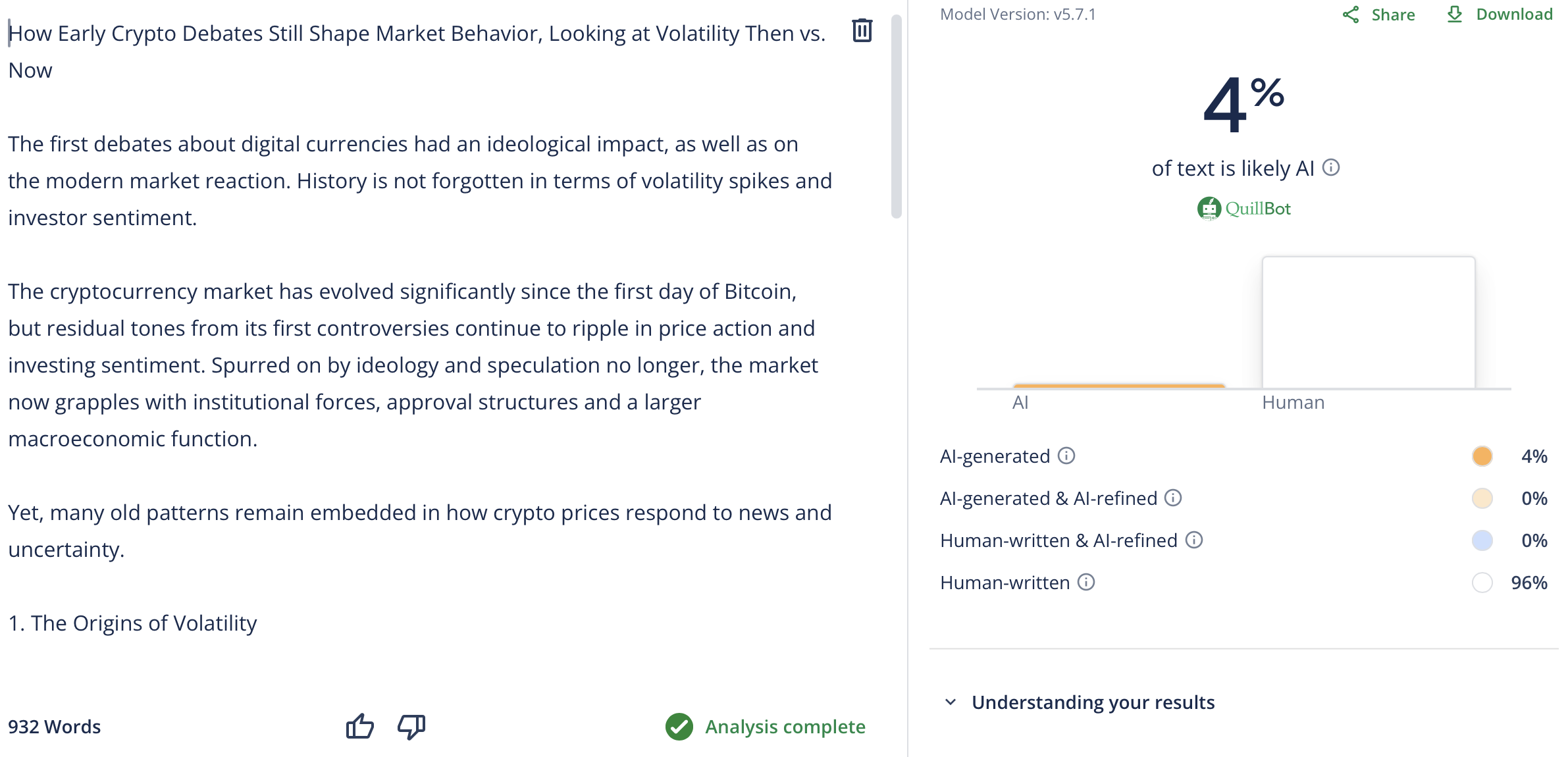The early debates about digital currencies had an ideological impact as well as a modern market reaction. History is not forgotten in terms of volatility spikes and investor sentiment.
The cryptocurrency market has evolved significantly since Bitcoin’s early days, but tons of leftovers from the early controversies continue to drive price action and investment. Already fueled by ideology and assumptions, the market already struggles with institutional forces, confirmation structures, and the larger macroeconomic function. Again, this is how many old patterns were built Crypto prices Respond to news and uncertainty.
1. origin of variability
The first turn of cryptocurrency was characterized by two opposite images: digital gold and a decentralized payments network. This section of this ideology, price and volatility, by reacting to the dealers causing visibility compared to their dealers.
Bitcoin’s early price swings were dramatic. In 2013, the currency gained more than 5,000% before crashing nearly 80%. Although shocking at the time, this kind of volatility created a culture of rapid boom-and-bust cycles that continues today.
According to Binance research, a total crypto market cap was experienced when more than $300 billion was lost in one week during the general correction. It is based on the exaggerated reactions that follow a change in the perceived sensation or regulatory changes underlying the habit.
Binance co-founder Yi said, “Crypto is not just the future of finance, it’s a system changer, one day at a time.” This constant restructuring affects how investors interpret market signals, often influencing volatility that mirrors the earliest days of digital assets.
2. Institutional forces are redefining the landscape
Once retail sentiment, once again price action, institutionalization already determines market activity. Statistics by the Binance Virtual Currency Exchange show that institutional Bitcoin Holding is now 19.8%, compared to 0.9% in 2014, a wide change in the market configuration.
This institutional presence tempert volatility, but did not erase it. Big players often reset portfolios based on macroeconomic signals, creating new patterns of rapid movement. For example:
- Seasonal trends: Bitcoin’s volatility is affected by annual and trading cycles, anniversaries and macroeconomic events.
- Macro sensitivity: Interest rate decisions and regulatory news already make significant moves.
- Liquidity shifts: institutional flows can fuel rallies or deepen corrections.
“County traders, although next month will continue to be quiet,” Binance analysts noted, “October is also known for reversing the weakness of September.” The rising forecast reflects a mature market, but joins early periods of volatility. It highlights how the ongoing, surprising, scarcity and foundational discourse of digital gold has affected its behavior at the highest level.
3. Cycles that refuse to die
Crypto is even sticking to the bikes of pre-pubescent, early adopters. One key story is the four-year cycle rooted in Bitcoin’s bearish cycles.
This period usually includes four stages:
- Stock: Low volatility, slow price growth.
- Bull Run: Rapid appreciation as demand increases.
- Distribution: Prices peak, volatility spikes.
- Bear market: corrections test long-term confidence.
“History suggests optimism,” he said. “Bitcoin posted 11 last gains on October 9.” Such consistency shows how deeply these early periods are woven into the market’s DNA and how traders react to patterns established a decade ago.
4. Regulatory evolution and market behavior
Previous debates have also contributed to how regulation affects market sentiment. Initial skepticism toward official control has been replaced by an appreciation that transparency can foster trust and access.
The CFTC is currently testing actions such as tokenized collateral foretell a trend To bring Crypto closer to traditional financial networks. This transition often necessitates volatility, but the response is more measured and less flashy than strategic change.
Regulatory clarity has also become a bullish indicator for institutional investors and a validation for retailers who have long-term legitimacy of crypto. However, the libertarian ideologies of the optical space launcher for politics are strong.
Catherine Chen, Head of VIP and Institutional at Binance, herself puts it succinctly. This alignment reflects how much the market has evolved, and how much the early ideological struggles have shaped reactions so far today.
5. Old lessons, new realities
Once upon a time, the debates over cryptocurrency, freedom and regulation, defining the value of value, the Value and Payment Network, are no longer philosophical explanations. They are involved in how markets behave.
Although cryptocurrency is a new era of integration with traditional finance, there is still evidence that it has begun:
- Market psychology: Traders still defy the narratives that formed a decade ago.
- Volatility: Early speculative patterns echo in today’s price swings.
- Acceptance: Institutional participation reflects trade-offs between ideology and practicality.
As one binance analyst put it, “the traditional four-year market cycle bull run is coming to an end, but this time may be different.” The difference lies in how far the market has come and how far it has advanced.
Crypto’s lasting legacy
The crypto market may be more mature, liquid and institutionally managed, but its behavior is deeply shaped by the evidence that drives its growth. Understanding these early disputes is not just historical trivia; It is key to understanding how the prices of cryptocurrencies move that they still do.
From ideological origins to institutional realities, the past is not behind cryptocurrency. It really, really affects everything from investor psychology to long-term cycles and how to unlock the next chapter of digital finance.






